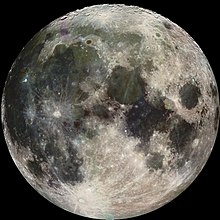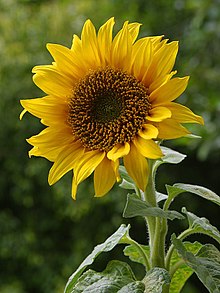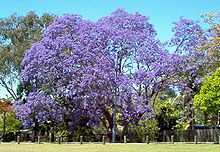
A kigo (季語, 'season word') is a word or phrase associated with a particular season, used in traditional forms of Japanese poetry. Kigo are used in the collaborative linked-verse forms renga and renku, as well as in haiku, to indicate the season referred to in the stanza. They are valuable in providing economy of expression.
History
Representation of, and reference to, the seasons has long been important in Japanese culture and poetry. The earliest anthology of Japanese poetry, the mid-8th century Man'yōshū, contained several sections devoted to the seasons. By the time of the first imperial Japanese anthology, the Kokinshū a century and a half later (AD 905), the seasonal sections had become a much larger part of the anthology. Both of these anthologies had sections for other categories such as love poems and miscellaneous (zō) poems.
The writing of the linked-verse form renga dates to the middle of the Heian period (roughly AD 1000) and developed through the medieval era. Over time, set rules developed for the writing of renga, and its formal structure specified that about half of the stanzas should include a reference to a specific season, depending upon their place in the poem. According to these rules, the hokku (the opening stanza of the renga) must include a reference to the season in which the renga was written. Poets as early as Iio Sogi (1421-1502) introduced the concept of seasonal references with anthologies of seasonal topics.
A lighter form of renga called haikai no renga ("playful" linked verse) was introduced in the 16th century, and became a salon type recreation by the Tokugawa era. Poets soon began to compose hokku independent of the longer, collaborative renga and it began to become an independent style. In the early twentieth century poets began experimenting with breaking the traditional elements of haiku, such as omitting the kigo entirely. This eventually led to the New Haiku and free verse haiku movements, which advocated more modern styles of haiku. Today most Japanese haiku include a kigo, though many haiku written in languages other than Japanese omit it (see for example Haiku in English).
Significance
Season words are evocative of images that are associated with the same time of year. For readers in New England, a poem about frost on a pumpkin evokes other sensations and traditions, like frosty air and apple cider. For Higginson writing in The Haiku Seasons, season words are a type of logopoeia--a word used not just for its meaning, but for its associations with other ideas.
Seasons

The association of kigo with a particular season may be obvious, though sometimes it is more subtle. In Japan, Pumpkins (kabocha) are a winter squash associated with the autumn harvest. It may be less obvious why the moon (tsuki) is an autumn kigo, since it is visible year round. In autumn the days become shorter and the nights longer, yet they are still warm enough to stay outside, so one is more likely to notice the moon. Often, the night sky will be free of clouds in autumn, with the moon visible. The full moon can help farmers work after the sun goes down to harvest their crops (a harvest moon).
Japanese seasons
Japan is long from north to south, so the seasonal features vary from place to place. The sense of season in kigo is based on the region between Kyoto and Tokyo, because Japanese classical literature developed mainly in this area. In the Japanese calendar, seasons traditionally followed the lunisolar calendar with the solstices and equinoxes at the middle of a season. The traditional Japanese seasons are:
- Spring: 4 February–5 May
- Summer: 6 May–7 August
- Autumn: 8 August–6 November
- Winter: 7 November–3 February
Within season categories, kigo can denote early, middle, or late parts of a season, which are defined approximately as the first, second, or third month of the season. In linked haiku forms like renku, subsequent linked haiku must move forward in season temporally. There are other rules governing season words in renku, including the frequency of certain season words, and how many stanzas remain in a season, once mentioned.
Saijiki and lists of kigo
Main article: Saijiki Main article: List of kigo
Japanese haiku poets often use a book called a saijiki, which lists kigo with example poems. An entry in a saijiki usually includes a description of the kigo itself, together with a list of similar or related words, and some examples of haiku that include that kigo. The saijiki are divided into the four seasons (and modern saijiki usually include a section for seasonless (muki) words). Those sections are divided into a standard set of categories, and then the kigo are sorted within their proper category. Japan Great Saikiji uses the sub-categories of season words, the heavens, earth, humanity, observances, animals, and plants.
Examples of Japanese summer kigo are:
Summer
- The Season: short night, burning, hot
- The Sky and Heavens: rainy season, evening downpour, afterglow, drought
- The Earth: waterfall, summer meadow, clear water
- Humanity: switching clothes, straw mats, swimming, fireworks
- Observances: Boys' Day (May 5), Gion festival (July)
- Animals: fawn, mosquito, cuckoo
- Plants: peony, lotus flower, orange blossoms, lily, sunflower
Outside Japan
Haiku started as a form of Japanese poetry and is now written in many different languages around the world. William J. Higginson's Haiku World (1996), which is the first international saijiki, contains more than 1,000 poems, by over 600 poets writing in 25 languages. The writing of haiku around the world has increased with the advent of the internet, where one can even find examples of haiku written in Latin, Esperanto, and Klingon, as well as numerous examples in more common languages.

Different regions internationally have their own lists of kigo. The Southern California Haiku Study group created their own list, which includes regional weather like June gloom and smog, Forest fires, seasonal events like the Tournament of Roses Parade, and local flora like the Jacaranda.
Kigo and haiku: an example
In the famous haiku by Matsuo Bashō below, "frog" (蛙, kawazu) is a kigo for spring. Haiku had been traditionally written about the singing of mating frogs, but Bashō chose to focus on a very different sound.
| 古池や かわずとびこむ 水の音 |
Furuike ya Kawazu tobikomu Mizu no oto |
The old pond; A frog jumps in,— The sound of the water. |
Haiku without kigo
Haiku without kigo is possible, and are described as Muki 無季 (no-season). Because of the practice of anthologizing haiku in saijiki, haiku that did not mention seasons were not as well-known, and many haiku writers assumed that haiku had to contain a kigo. Poems on non-seasonal topics appeared in the imperial anthology Kokinshū, such as love, travel, and religion. Usually about half the stanzas in a renku do not reference a season. In contemporary haiku composition, Japanese haiku writers disagree about if a haiku requires a kigo, while writers outside of Japan feel free to write haiku without kigo. The Modern Haiku Association of Japan published a collection of kigo in 2004 which included non-seasonal kigo.
See also
Further reading
- 『入門歳時記』大野林火監修、俳句文学館編。角川書店 、ISBN 4-04-063000-9.
- Gill, Robin D. (2007). The Fifth Season—Poems to Re-Create the World: In Praise of Olde Haiku: New Year Ku; Books 1 & 2. Paraverse Press. ISBN 978-0-9742618-9-8.
- —— (2005). Kiyose (Seasonword Guide). From Here Press. ISBN 978-0-89120-041-3.
- (24 pp. A pocket kiyose listing over 700 Japanese kigo in English, ordered by season and category)
Online
- Japanese Haiku — a Topical Dictionary at the Univ. of Virginia Japanese Text Initiative a work-in-progress based on the Nyu-mon Saijiki by the Museum of Haiku Literature in Tokyo, most translations by William J. Higginson and Lewis Cook
- Haiku in Twelve Months by Inahata Teiko, on the Kyoshi Memorial Museum website
Online lists of season words
- The Yuki Teikei Haiku Season Word List from the Yuki Teikei Haiku Society (Northern California)
- Kiyose from the Shiki Internet Haiku Salon:
- Alaska Haiku Society Saijiki, with pictures and commentary for some kigo
Notes
- Higginson 1996b, pp. 31–34.
- ^ Blyth, R.H. (1963). "A History of Haiku Volume One". The Haiku Foundation Digital Library. p. 68 of PDF, page 46 of original text. Retrieved 13 January 2024.Addiss 2012, p. 47Higginson 1996b, pp. 94–95
- Ueda (1991), p. 428.
- Higginson 1996b, p. 19.
- Wilson, William Scott (2022). A Beginner's Guide to Japanese Haiku. Tuttle Publishing. p. 15. ISBN 978-4-8053-1687-0.
- Higginson 1996b, pp. 109–112.
- Higginson 1996b, pp. 94–95.
- Higginson 1996b, pp. 108–109.
- "Kiyose - collection of season words in Japan - Autumn". Shiki Internet Haiku Salon. Archived from the original on 22 July 2011. Retrieved 17 July 2024.
- Higginson 1996b, p. 21.
- Higginson, William J. Kiyose (Seasonword Guide), From Here Press, 2005, p.24
- ^ Yamamoto, Kenkichi. "The Five Hundred Essential Japanese Season Words" (PDF). Renku Home. Retrieved 15 July 2024.
- Higginson 1996b, pp. 60–61.
- Gill (2007), p. 18.
- Higginson 1996b, pp. 96–97, 100–101, 113–116.
- Welch, Michael Dylan (Autumn 1997). "HAIKU WORLD: AN INTERNATIONAL POETRY ALMANAC". Woodnotes (31).
- "jach qa'rol – A collection of Klingon haiku – Klingon Language Institute". Klingon Language Institute. Retrieved 17 July 2024. "Hajko en Esperanto". www.vastalto.com. Ricius, Alexander. "Crateris Chilias". www.pitaka.ch.
- Dee, Billie. "Southern California Season Words". Southern California Haiku Study Group. Retrieved 15 July 2024.
- Welch, Michael Dylan (May 2014). "This Perfect Rose: The Lasting Legacy of William J. Higginson". Juxta. 1 (1).
- Translation by R.H. Blyth in Sato, Hiroaki. One Hundred Frogs: from renga to haiku to English. Weatherhill, 1983 ISBN 0834801760 p154
- ^ Gilbert, Richard; Kaneko, Tohta (Summer 2006). "A New Haiku Era: Non-season kigo in the Gendai Haiku saijiki". The Haiku Foundation Digital Library.
- Higginson 1996b, pp. 109–111.
References
- Addiss, Stephen (2012). The Art of Haiku: Its History Through Poems and Paintings by Japanese Masters. Shambhala. ISBN 9781590308868.
- Higginson, William J. (1996a). Haiku World: An International Poetry Almanac. Kodansha International. ISBN 4770020902.
{{cite book}}: CS1 maint: ref duplicates default (link)
- (An international haiku saijiki with over 1,000 haiku from poets in 50 countries covering 680 seasonal topics)
- —— (1996). The Haiku Seasons: Poetry of the Natural World. Berkeley: Kodansha. ISBN 4770016298.
- (a companion book to Haiku World discussing the development of haiku, and the importance of the seasons and kigo to haiku)
- Ueda, Makoto (1991). Basho and His Interpreters: Selected Hokku with Commentary. Stanford University Press. ISBN 9780804725262.
| Japanese poetry | |
|---|---|
| Major forms | |
| Poetry works and collections | |
| Individuals and groups of Japanese poets | |
| Individual poems | Articles with poems |